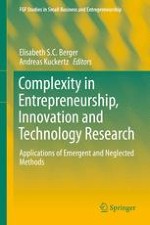2016 | OriginalPaper | Chapter
The Complex Determinants of Financial Results in a Lean Transformation Process: The Case of Italian SMEs
Authors : Arnaldo Camuffo, Fabrizio Gerli
Published in: Complexity in Entrepreneurship, Innovation and Technology Research
Publisher: Springer International Publishing
Activate our intelligent search to find suitable subject content or patents.
Select sections of text to find matching patents with Artificial Intelligence. powered by
Select sections of text to find additional relevant content using AI-assisted search. powered by
